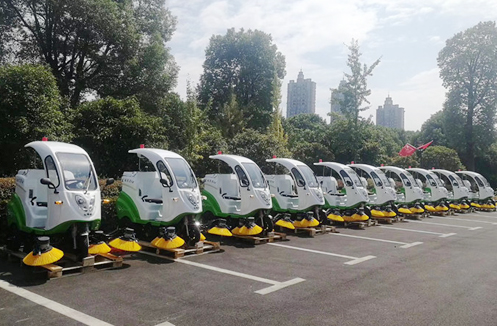Why is the endurance of electric sanitation vehicles halved in winter?
2023-11-01
The reduction of electric sanitation vehicle's range in winter has always existed, which is also a situation that any electric sanitation vehicle produced by an automobile enterprise will encounter. However, this situation, "mileage anxiety", will become more sensitive in winter, which will inevitably lead to excessive amplification. In the final analysis, the climate is the main reason for the "reduction" of the electric sanitation vehicle's winter range!

1. In winter, the air density is high and the wind resistance increases; (The impact force is small. The impact force is slightly large during high-speed operation.
2. The tire pressure decreases and the tire resistance increases in winter; (Small effect, no effect after air supplement)
3. The lithium battery has low activity at low temperature, and its internal resistance increases, which will cause additional loss when discharging; (Moderate impact)
4. High power charging cannot be carried out at low temperature, so the kinetic energy recovery function will be limited or even disabled; (Moderate impact)
5. The active battery heating system will start to work to prevent excessive loss of battery charging and discharging performance at low temperature. (Moderate impact)
6. The electric heating energy consumption is very high when the warm air is turned on in winter; (Great impact) First and second, fuel vehicles are also affected, but the impact is small and can be ignored.

The optimal discharge temperature range of lead-acid battery is 25 ℃. The normal discharge temperature range is 5-40 ℃. Once the temperature is too low, the chemical changes of lead and acid in the battery will be reduced.
Only 80% of the electricity can be discharged when the temperature of 20AH is lower than 5 ℃. The discharge capacity of battery with temperature lower than - 10 ℃ is only 50%. The customers of electric sanitation vehicles in Northeast China think it is the most obvious.

Most lithium batteries used in pure electric sanitary vehicles belong to chemical batteries. The discharge of lithium battery is also a process of chemical change. The principle is that the cathode precipitates lithium ions through chemical changes, and then moves to the anode through the electrolyte. In this process, current will be generated. Low temperature will reduce the chemical reaction rate in the battery, thus reducing the actual working voltage of the battery and reducing the available capacity of the battery.

1. In winter, the air density is high and the wind resistance increases; (The impact force is small. The impact force is slightly large during high-speed operation.
2. The tire pressure decreases and the tire resistance increases in winter; (Small effect, no effect after air supplement)
3. The lithium battery has low activity at low temperature, and its internal resistance increases, which will cause additional loss when discharging; (Moderate impact)
4. High power charging cannot be carried out at low temperature, so the kinetic energy recovery function will be limited or even disabled; (Moderate impact)
5. The active battery heating system will start to work to prevent excessive loss of battery charging and discharging performance at low temperature. (Moderate impact)
6. The electric heating energy consumption is very high when the warm air is turned on in winter; (Great impact) First and second, fuel vehicles are also affected, but the impact is small and can be ignored.

The optimal discharge temperature range of lead-acid battery is 25 ℃. The normal discharge temperature range is 5-40 ℃. Once the temperature is too low, the chemical changes of lead and acid in the battery will be reduced.
Only 80% of the electricity can be discharged when the temperature of 20AH is lower than 5 ℃. The discharge capacity of battery with temperature lower than - 10 ℃ is only 50%. The customers of electric sanitation vehicles in Northeast China think it is the most obvious.

Most lithium batteries used in pure electric sanitary vehicles belong to chemical batteries. The discharge of lithium battery is also a process of chemical change. The principle is that the cathode precipitates lithium ions through chemical changes, and then moves to the anode through the electrolyte. In this process, current will be generated. Low temperature will reduce the chemical reaction rate in the battery, thus reducing the actual working voltage of the battery and reducing the available capacity of the battery.
X
We use cookies to offer you a better browsing experience, analyze site traffic and personalize content. By using this site, you agree to our use of cookies.
Privacy Policy



